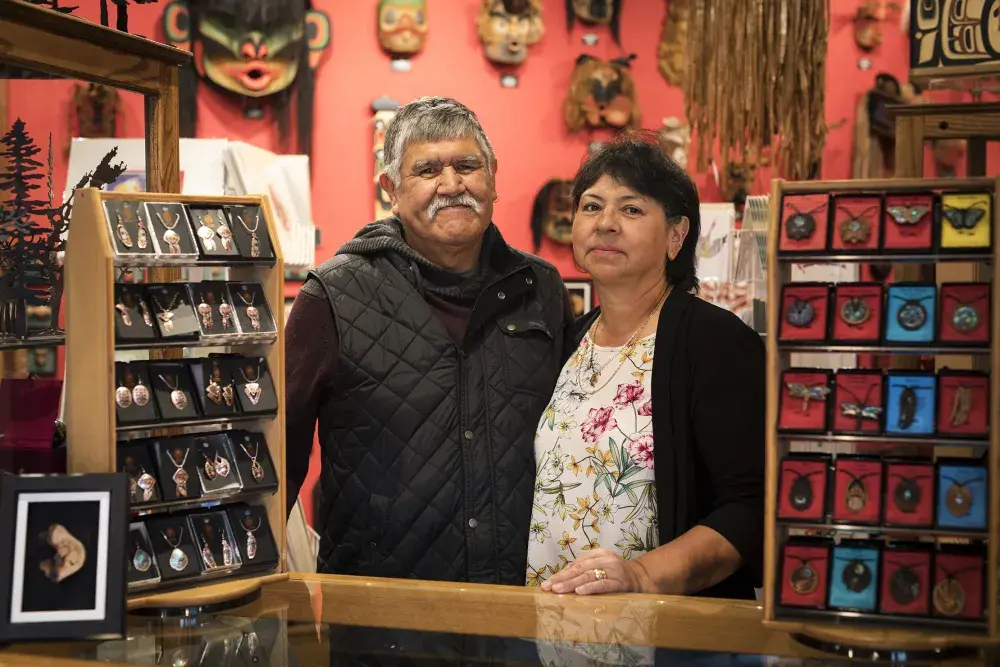It’s not uncommon for Tofino to go into water restrictions throughout the summer months given dryer weather conditions and an increase in visitor traffic. Kat Thomas, a counsellor for the District of Tofino, said that stage one is usually implemented at the beginning of each summer, though, this year is the earliest that she recalls going into stage three water restrictions.
In early July all outdoor water use became prohibited among residents, business owners and visitors with most public washrooms being replaced with portable stalls.
On Sept. 1 the District of Tofino released a call for urgent water conservation, outlining recommendations for short term-rentals, resorts, food and beverage services, tour providers, retailers and residents in an effort to have reservoirs outlast the drought.
The notice provides recommendations to each sector to decrease water usage, such as shutting off access to outdoor showers, selling or providing bottled water, as well as removing unnecessary linens and extra towels.
Despite a decrease in visitor traffic due to the Highway 4 closure, June’s water consumption only went down by 4.2 per cent compared to June a year earlier, reads a water conservation notice from early July.
Due to low creek flows on Meares Island, where Tofino sources their water, the reservoirs have reached their lowest level so far this year. Tofino’s particularly dry season saw 75 per cent less rainfall than an average summer, reads an urgent water conservation notice from Sept. 1.
“In addition to not seeing the little bit of rain that we normally do, we didn’t get the same level of fog,” said Thomas. “I think it's less the volume of the rain, but [we] just need some sustained rainfall.”
The District of Tofino has been monitoring water usage every day and sharing it with the community, said Thomas.
“We were sharing that information with the community to kind of encourage people and show them that we were all in this together,” she said. “Everybody was doing such an incredible job of it.”
In early September, staff from the District of Tofino were able to redirect some of the water from higher performing areas to sites with lower levels, said Thomas.
A study by McElhanney Ltd, which will help inform a report set to be released by the end of this year, will include detailed solutions to Tofino’s water system, helping to plan management for the next couple of decades, she added.
Maquinna, Lewis George, Ahousaht Tyee Ha’wilth, owns the House of Himwitsa Native Art Gallery & Gifts, House of Himwitsa Lodge and a smoked fish business in Tofino. He said the drought and water conservation efforts have had a “tremendous impact” on his business and day-to-day life.
“Our guests have been really good,” said Maquinna, who has five rooms at the House of Himwitsa Lodge. “We've been telling them that [we] really got to watch out for our water.”
In the last couple years Maquinna removed four hot tubs from his guest house foreseeing the impacts of water shortages in the summer. Now, Maquinna has a 500-gallon tank to collect rain from the roof which he uses to water the plants outside his business, and when needed, power washing. He plans to add another 500-gallon tank to collect rainwater.
“People should be gathering rain and using rainwater to clean whatever it is that they're having to clean,” said Maquinna.
“This is the worst so far that we’ve seen,” he added. “Last year was bad too but we scraped by it.”
Similarly, Tla-o-qui-aht Tribal Administrator Jim Chisholm said that this year was a “more extreme summer” and is hoping for a wet winter and spring so that next tourist season bounces back.
“Usually in the summertime we get a lot of rain as well, it's just not happening anymore,” said Maquinna.

